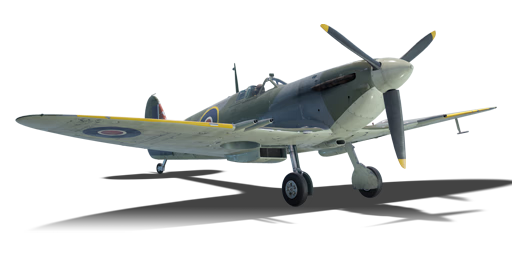



The advent of the high-altitude Ju 86 bomber over Britain in late 1940 saw a growing need for a new high-altitude-capable (pressurised) variant of the Spitfire. A stop-gap solution was presented in the Spitfire Mk V, a Mk I airframe fitted with a new Merlin 45 engine, producing 1,440 hp and incorporating a new single-stage supercharger, as well as other improvements including a carburettor able to handle zero-G manoeuvres without fuel flow issues. The Mk Vc in particular was the first variant of the Spitfire to be fitted with the "C-type" or "Universal" wing, heavily redesigned to reduce manufacturing time as well as allowing a wide variety of armament layouts to be equipped without the need for structural modifications. The C-type wing was commonly fitted with an all-cannon loadout of 4 x 20 mm Hispano cannons, which could also be belt-fed in the new wing design, doubling their ammunition capacity compared to those in the B-type wings. With the quick introduction of the Spitfire F Mk IX in order to counter the rising threat of the Fw 190, the Mk Vc saw little combat over Europe. However, Spitfire Mk Vs were commonly operated overseas, resulting in their tropicalised counterparts.
Introduced in Update 1.77 "Advancing Storm", the Mk Vc will commonly be matched against planes such as the Bf 109 G-2/trop, which performs better in the vertical (climbing/diving), or the A6M5, which performs better in the horizontal (turning). While this aircraft faces tricky opposition, it is far from helpless as one might expect from what is essentially the airframe of a Spitfire Mk Ia. The Spitfire Mk Vc has two major advantages over its opposition: turn performance, engine performance below 3,000 m, and armament. The plane is blessed with a Merlin 45M engine that grants it phenomenal acceleration below that altitude compared to German opposition, as well as a hard-hitting armament of four Hispano Mk II cannons that gives it an exceptionally high burst mass of 5.17 kg/s, putting it on the same level as the Fw 190 A-5. The Mk Vc has marginally better performance over its preceding tropicalised counterpart due to the lack of air filters and other modifications, although the difference is rather minimal.
flaps
flaps
flaps
brake
| Belt | Belt filling | Armor penetration (mm) at a distance: | |||||
|---|---|---|---|---|---|---|---|
| 10 m | 100 m | 500 m | 1000 m | 1500 m | 2000 m | ||
| HEI/SAP-I/T | 22 | 20 | 14 | 9 | 6 | 4 | |
| AP-T/HEI/SAP-I | 37 | 35 | 25 | 16 | 10 | 7 | |
| T/HEI/SAP-I/HEI/SAP-I | 22 | 20 | 14 | 9 | 6 | 4 | |
| AP-T/T/HEI | 37 | 35 | 25 | 16 | 10 | 7 | |
| AP-T/SAP-I/HEI/AP-T | 37 | 35 | 25 | 16 | 10 | 7 | |
| HEI/HEI/SAP-I | 22 | 20 | 14 | 9 | 6 | 4 | |












Flight performance | |
|---|---|
Survivability |
|---|
Weaponry |
|---|